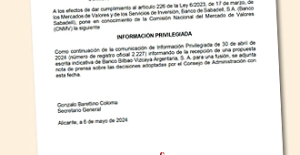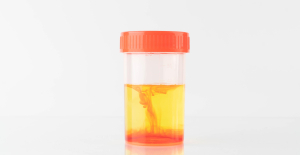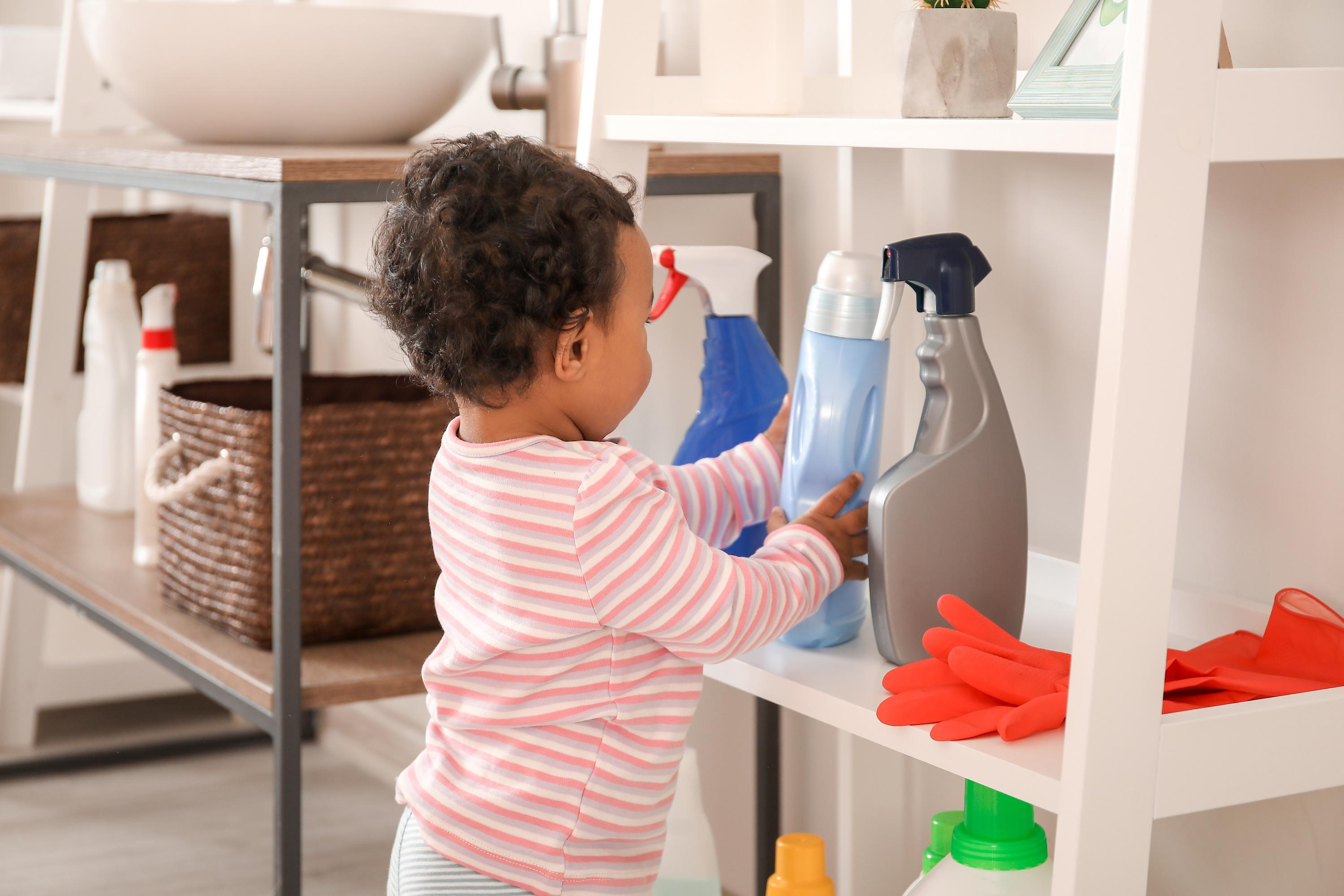From 4 months, children begin to explore their environment. During this discovery phase, they are likely to put all objects within reach into their mouths, including harmful substances. Thus, domestic accidents due to poisoning are not rare among children under 6 years old, warns the National Agency for Food, Environmental and Occupational Health Safety (ANSES) in its new report covering the 2014 period. -2020. Some may have led, for the most serious ones, to hospitalization or even death of the child, according to data recorded by the Poison Control Centers (CAP), visits to the emergency room of the Oscour network managed by Santé Publique France and data hospitalization and death. “Most of these accidents are, however, avoidable, provided you adopt the right reflexes,” warns Dr Sandra Sinno-Tellier, deputy director of health alerts and surveillance at Anses.
Also read: Nicotine and tobacco poisoning of children and adolescents is becoming more and more common
At the top of the most frequent poisonings: household products, including liquid laundry detergent pods. Unlike their solid counterparts, these products feature “flashy” shapes and colors for little ones. However, they contain toxic substances which cause digestive symptoms, including nausea and vomiting. If misused, they can also lead to suffocation and, unlike traditional laundry detergent, they can cause eye splashes. Although poisoning by pipe unblocking products is less frequent, it remains just as serious because these products can cause serious burns to the mouth and esophagus.
More generally, between 2014 and 2022, 30% of calls to poison control centers were attributable to exposure to cleaning products which caused 22% of cases of serious poisoning in children under 6 years old, and 4 deaths recorded at the Center of epidemiology on medical causes of death (CépiDc). “Despite a halving of these poisonings over the study period, in particular thanks to the compulsory European measures taken from 2015, these poisonings remain the most numerous,” recalls Dr Sinno-Tellier.
Coming in second place is the ingestion of medications, responsible for 34% of the most serious poisonings and 16% of calls to poison control centers between 2014 and 2020. The contents of the medicine cabinet were involved, including 6 of the 10 deaths observed by the CAP and 7 of the 23 deaths observed by the CépiDc. Generally speaking, these accidents are more frequent in winter, due to seasonal epidemics (flu, colds, etc.). Among the treatments incriminated were ibuprofen, aspirin and paracetamol as well as medications for the nervous system (antidepressants, anxiolytics, etc.) and cardiovascular pathologies.
As for carbon monoxide poisoning, it remains the leading cause of hospitalization and admission to intensive care among children under 6 years old. Of the reported accidents, nine resulted in death. Exposure of young people mainly results from failures of heating installations. “The toxic gas released is dangerous because it is non-irritating, colorless and odorless and can cause drowsiness or unusual behavior in children who cry or refuse to eat,” describes Sandra Sinno-Tellier.
Also read: Vitamin D in children: why overdose should be avoided
In addition to these three categories, the increase in frequency, but also in severity, of cannabis poisoning is at the heart of concerns: in 2020, this substance was the cause of 11% of intensive care admissions among children under 6 years old, i.e. twice as much as in 2014 (5%). These poisonings occur by two routes: inhalation of smoke and ingestion of resin pellets found by the child, causing various symptoms such as drowsiness, impaired consciousness or even a coma requiring respiratory assistance.
Other events, among the most dramatic, have also involved the ingestion of objects such as button batteries, causing erosion of the esophagus and more rarely hemorrhages, or even bullets. water sold in dehydrated form, for decorative purposes or for play. “These marbles are in theory prohibited as toys for children under three years old. The problem is that they are often the cause of delayed poisoning: by swelling in the digestive tract, they can end up blocking it or causing obstructions,” says Dr Sinno-Tellier.
Also read: Cocaine poisoning: on the rise among children too!
However, most of these poisonings are preventable. The authorities remind you that it is essential to put dangerous objects out of the child's reach. Maintenance products must be stored up high or in closed cupboards, remembering to replace the safety cap after each use. “Moreover, unpackaging products, that is to say transferring them from the original bottle to plastic water bottles for example, is not recommended to avoid any risk of confusion,” recalls Sandra Sinno-Tellier.
The same principle applies to medicines: they should be kept away from little ones and, preferably, stored in different cupboards to distinguish those intended for adults and children. Also beware of the bad habit of taking tablets out of their packaging just before use, for example by placing them next to a glass of water on the table. These tablets are never safe from wandering hands…
Finally, avoiding contact with a loved one when consuming cannabis and having heating installations regularly inspected, ideally once a year, helps prevent the risk of poisoning through smoke and/or gas inhalation. “We must avoid using improvised heating systems such as braziers and generators which are lesser known but significant sources of carbon monoxide poisoning,” warns Sandra Sinno-Tellier.

 In Russia, Vladimir Putin stigmatizes “Western elites”
In Russia, Vladimir Putin stigmatizes “Western elites” Body warns BBVA that "the Government has the last word" in the takeover bid for Sabadell
Body warns BBVA that "the Government has the last word" in the takeover bid for Sabadell Finding yourself face to face with a man or a bear? The debate that shakes up social networks
Finding yourself face to face with a man or a bear? The debate that shakes up social networks Sabadell rejects the merger with BBVA and will fight to remain alone
Sabadell rejects the merger with BBVA and will fight to remain alone The presence of blood in the urine, a warning sign of bladder cancer
The presence of blood in the urine, a warning sign of bladder cancer A baby whose mother smoked during pregnancy will age more quickly
A baby whose mother smoked during pregnancy will age more quickly The euro zone economy grows in April at its best pace in almost a year but inflationary pressure increases
The euro zone economy grows in April at its best pace in almost a year but inflationary pressure increases Children born thanks to PMA do not have more cancers than others
Children born thanks to PMA do not have more cancers than others Apple alienates artists with the ad for its new iPad praising AI
Apple alienates artists with the ad for its new iPad praising AI Duration, compensation, entry into force... Emmanuel Macron specifies the contours of future birth leave
Duration, compensation, entry into force... Emmanuel Macron specifies the contours of future birth leave Argentina: the street once again raises its voice against President Javier Milei
Argentina: the street once again raises its voice against President Javier Milei Spain: BBVA bank announces a hostile takeover bid for its competitor Sabadell
Spain: BBVA bank announces a hostile takeover bid for its competitor Sabadell Berry affair: Jeane Manson victim of a heart problem after a court hearing
Berry affair: Jeane Manson victim of a heart problem after a court hearing Venice Film Festival: Isabelle Huppert will chair the jury of the 81st festival
Venice Film Festival: Isabelle Huppert will chair the jury of the 81st festival Louvre: Delacroix’s “Liberty Leading the People” target of the Riposte Alimentaire collective
Louvre: Delacroix’s “Liberty Leading the People” target of the Riposte Alimentaire collective The Coubertin Spirit, Eternal Memory, Planet of the Apes... Films to watch this week
The Coubertin Spirit, Eternal Memory, Planet of the Apes... Films to watch this week Omoda 7, another Chinese car that could be manufactured in Spain
Omoda 7, another Chinese car that could be manufactured in Spain BYD chooses CA Auto Bank as financial partner in Spain
BYD chooses CA Auto Bank as financial partner in Spain Tesla and Baidu sign key agreement to boost development of autonomous driving
Tesla and Baidu sign key agreement to boost development of autonomous driving Skoda Kodiaq 2024: a 'beast' plug-in hybrid SUV
Skoda Kodiaq 2024: a 'beast' plug-in hybrid SUV The home mortgage firm rises 3.8% in February and the average interest moderates to 3.33%
The home mortgage firm rises 3.8% in February and the average interest moderates to 3.33% This is how housing prices have changed in Spain in the last decade
This is how housing prices have changed in Spain in the last decade The home mortgage firm drops 10% in January and interest soars to 3.46%
The home mortgage firm drops 10% in January and interest soars to 3.46% The jewel of the Rocío de Nagüeles urbanization: a dream villa in Marbella
The jewel of the Rocío de Nagüeles urbanization: a dream villa in Marbella Institutions: senators want to restore the accumulation of mandates and put an end to the automatic presence of ex-presidents on the Constitutional Council
Institutions: senators want to restore the accumulation of mandates and put an end to the automatic presence of ex-presidents on the Constitutional Council Europeans: David Lisnard expresses his “essential and vital” support for François-Xavier Bellamy
Europeans: David Lisnard expresses his “essential and vital” support for François-Xavier Bellamy Facing Jordan Bardella, the popularity match turns to Gabriel Attal’s advantage
Facing Jordan Bardella, the popularity match turns to Gabriel Attal’s advantage Europeans: a senior official on the National Rally list
Europeans: a senior official on the National Rally list These French cities that will boycott the World Cup in Qatar
These French cities that will boycott the World Cup in Qatar Top 14: Josua Tuisova, the expected return of “The Animal”
Top 14: Josua Tuisova, the expected return of “The Animal” Tour of Italy: Alaphilippe beaten in the sprint by Pelayo Sanchez during the 6th stage of the Giro
Tour of Italy: Alaphilippe beaten in the sprint by Pelayo Sanchez during the 6th stage of the Giro Paris 2024 Olympic Games: in video, one of the survivors of the Marseille roundup carried the Olympic flame
Paris 2024 Olympic Games: in video, one of the survivors of the Marseille roundup carried the Olympic flame Table tennis: Félix Lebrun out in the quarterfinals in Jeddah
Table tennis: Félix Lebrun out in the quarterfinals in Jeddah


















